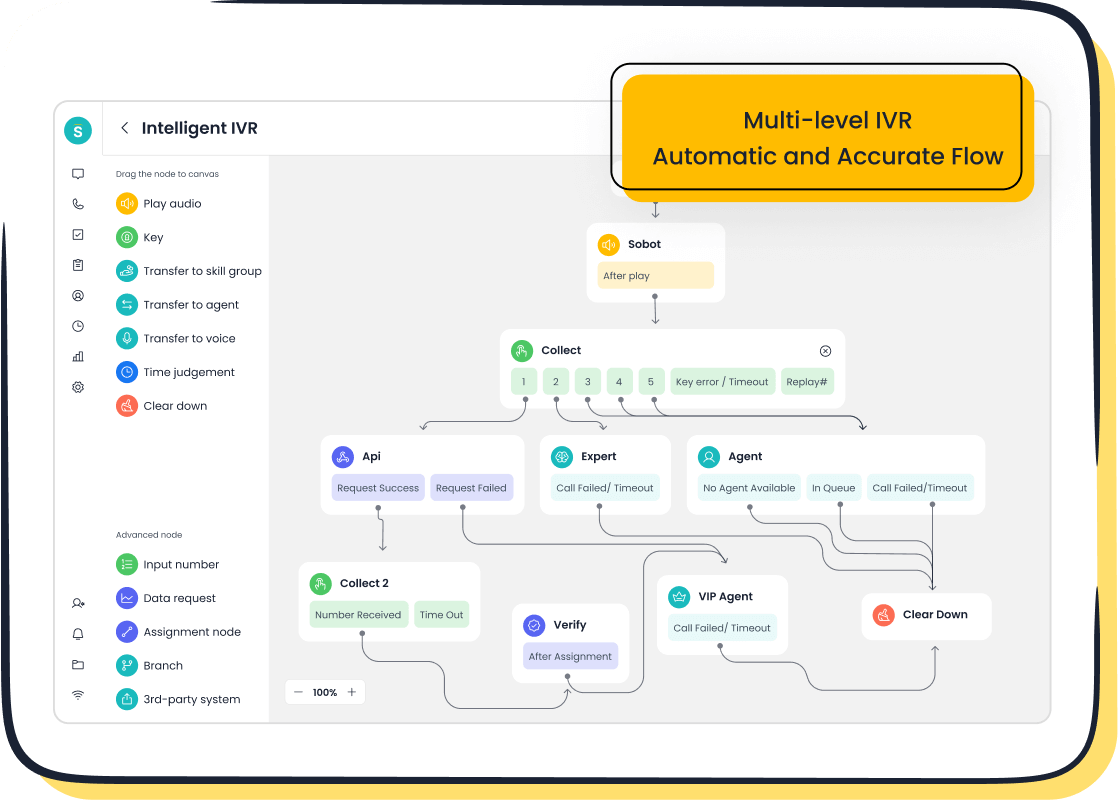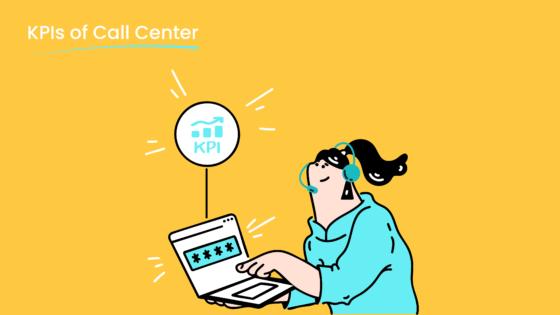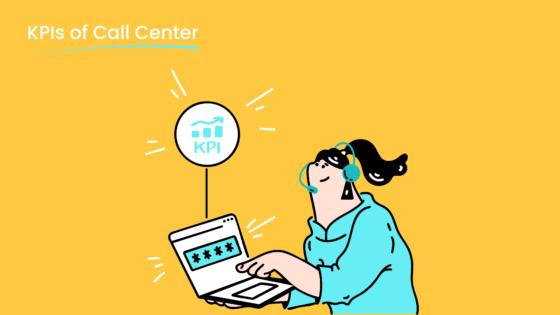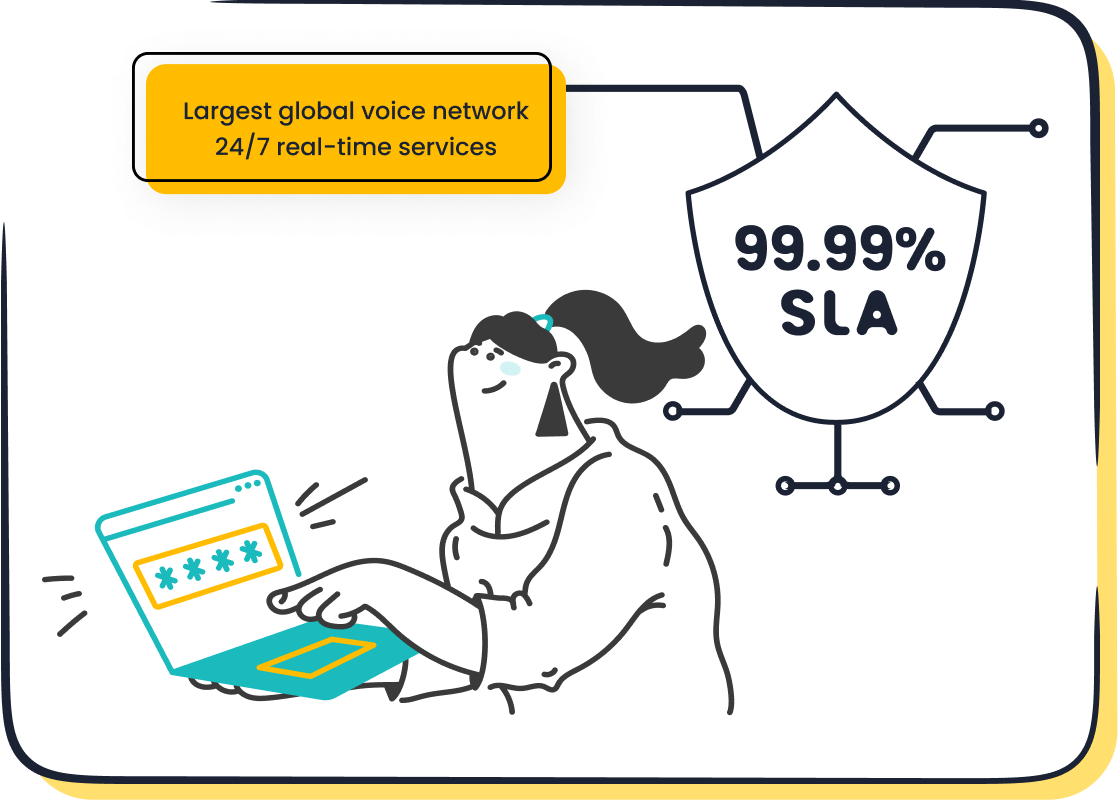10 Customer Service Greeting Phrases to Avoid and What to Say Instead

First impressions matter, especially in customer service greetings. The way you greet a customer can set the tone for the entire interaction. Thoughtful language builds trust and leaves a lasting impression. For instance, customers today expect genuine empathy and clear communication. They value honesty, whether it’s about pricing or policies. Using the wrong words can make them feel dismissed or undervalued, while the right ones can make them feel heard and respected.
In 2024, great customer service is all about building meaningful relationships. By understanding what your customer needs, you create a connection that fosters loyalty. Tools like Sobot’s contact center solutions help businesses personalize customer service greetings and streamline communication. This ensures every interaction starts on the right note.
1. "How can I help you?" – A Common Customer Service Greeting
Why this phrase should be avoided
At first glance, "How can I help you?" seems harmless. It’s polite and straightforward. But when you dig deeper, it lacks personalization and warmth. Customers often feel like they’re just another number in a queue when greeted this way. The phrase doesn’t show appreciation for their time or effort in reaching out.
Imagine calling customer service after a frustrating experience, only to hear this generic greeting. It doesn’t acknowledge your emotions or set a positive tone for the conversation. Studies show that 68% of customers leave a business because they feel unappreciated. A greeting like this can unintentionally reinforce that feeling.
Additionally, this phrase doesn’t encourage open communication. Customers might hesitate to share their concerns fully, especially if they feel the response will be transactional rather than empathetic. In customer service communication, the goal is to make the customer feel valued and understood from the very first interaction.
A better alternative: "What can I do to make your experience better today?"
Switching to "What can I do to make your experience better today?" instantly changes the tone of the conversation. This phrase is more engaging and customer-focused. It shows that you’re not just here to solve a problem—you’re here to enhance their experience.
This alternative works because it’s proactive. It invites the customer to share their needs openly while reassuring them that their concerns matter. For example, if a customer calls about a delayed order, this greeting sets the stage for a solution-oriented discussion. It also aligns with the principles of great customer service, which prioritize empathy and personalization.
Using tools like Sobot’s Voice Call Center can help you implement this approach seamlessly. With features like intelligent IVR and AI-powered voicebots, you can customize greetings to match the customer’s situation. For instance, a returning customer might hear a tailored message acknowledging their loyalty. This level of personalization not only enhances customer experience but also builds trust and loyalty over time.
By adopting this alternative, you’re not just greeting customers—you’re creating a positive first impression that sets the tone for the entire interaction.
2. "Please calm down" – Avoiding Dismissive Language in Customer Service

Why this phrase should be avoided
When a customer is upset, hearing "Please calm down" can feel dismissive and invalidating. This phrase often shuts down communication and makes the customer feel unheard. Instead of de-escalating the situation, it can escalate frustration. Customers want their emotions acknowledged, not brushed aside.
Imagine you’re calling customer service after a billing error. You’re already stressed, and the representative tells you to calm down. It feels like they’re ignoring your concerns rather than addressing them. This kind of response can damage trust and make customers question the brand’s commitment to great customer service.
A study on customer interactions highlights how dismissive language negatively impacts satisfaction. For example, phrases like "No need to get so worked up about it" or "I don’t understand why you’re so frustrated" disconnect the customer from the representative. Here’s a quick breakdown:
| Phrase to Avoid | Reason for Avoidance |
|---|---|
| Please calm down | Shuts down communication and makes customers feel unheard. |
| No need to get so worked up about it | Demonstrates that the brand doesn’t care about the customer's feelings. |
| I don’t understand why you’re so frustrated | Disconnects the connection between the customer and the service representative. |
In customer service, your goal is to build rapport and trust. Using dismissive language does the opposite. It creates barriers and leaves customers feeling undervalued.
A better alternative: "I understand this is frustrating. Let’s work together to resolve it."
Empathy is the key to turning a negative interaction into a positive one. Saying, "I understand this is frustrating. Let’s work together to resolve it," shows you care about the customer’s feelings and are committed to finding a solution. This phrase fosters collaboration and reassures the customer that their concerns matter.
Empathetic responses have proven benefits. Research shows that empathy enhances customer satisfaction by making customers feel cared for. It also helps de-escalate tense situations and builds trust. Here’s why empathetic language works:
- It makes customers feel understood and valued.
- It improves customer relations and satisfaction.
- It fosters loyalty and builds lasting relationships.
For example, if a customer calls about a delayed shipment, this alternative sets the stage for a productive conversation. Instead of focusing on the problem, it shifts the focus to the solution.

Sobot’s Voice Call Center can help you implement empathetic communication effectively. With features like AI-powered voicebots and intelligent call routing, you can ensure every customer receives personalized attention. These tools allow agents to access customer data instantly, enabling them to respond with empathy and precision. By combining thoughtful language with advanced technology, you can deliver great customer service that leaves a lasting impression.
Empathy isn’t just a nice-to-have—it’s essential for building trust and loyalty. When you use phrases like this, you show customers that you’re not just solving their problems; you’re genuinely invested in their experience.
3. "That’s our policy" – Reframing Policy-Related Customer Service Phrases
Why this phrase should be avoided
Hearing "That’s our policy" can feel like hitting a brick wall. It’s a phrase that often leaves customers feeling stuck and powerless. When you use it, you’re essentially telling the customer that there’s no room for flexibility. This can make them feel like their concerns don’t matter.
Imagine you’re trying to return a product, but the policy doesn’t allow it. You explain your situation, only to hear, "That’s our policy." It’s frustrating, right? This kind of response can quickly escalate the situation. According to a study by PwC, 32% of customers stop doing business with a brand after just one bad experience. A rigid phrase like this can easily contribute to that statistic.
Policies are important, but how you communicate them matters even more. Instead of shutting down the conversation, you should aim to guide the customer toward a solution. Great customer service is about finding ways to help, even within the boundaries of company policies.
A better alternative: "Here’s why we have this policy and how I can assist you within these guidelines."
This alternative shifts the focus from the limitation to the solution. By explaining the reason behind the policy, you show transparency and build trust. Adding, "how I can assist you within these guidelines" makes the customer feel supported rather than dismissed.
For example, if a customer wants to return an item past the return window, you could say, "Our return policy is in place to ensure fairness for all our customers. However, let me see what I can do to assist you in this situation." This approach keeps the conversation open and collaborative.
Using tools like Sobot’s Omnichannel Solution can make this process even smoother. With its unified workspace, agents can access customer data instantly, allowing them to provide personalized responses. This not only helps in explaining policies but also in enhancing customer experience by offering tailored solutions.
Remember, customers value honesty and effort. When you take the time to explain and assist, you turn a potentially negative interaction into a positive one. That’s the hallmark of great customer service.
4. "I don’t know" – Enhancing Confidence in Customer Service Communication
Why this phrase should be avoided
Hearing "I don’t know" from a customer service representative can be frustrating. It gives the impression that the person assisting you lacks knowledge or interest in solving your problem. This phrase can make you feel like you’ve hit a dead end, especially when you’re already seeking help for something important.
Imagine calling customer service to ask about a delayed refund, only to hear, "I don’t know." It’s not just unhelpful—it’s discouraging. Customers expect confidence and expertise from the person they’re speaking with. When that’s missing, trust in the brand can quickly erode.
A study by PwC found that 32% of customers stop doing business with a brand after a single bad experience. Phrases like "I don’t know" contribute to this by leaving customers feeling unsupported. In customer service, every word matters. Your goal should always be to reassure the customer and guide them toward a solution.
A better alternative: "Let me find that information for you."
Instead of saying "I don’t know," try, "Let me find that information for you." This phrase shifts the focus from the problem to the solution. It shows that you’re committed to helping, even if you don’t have the answer right away.
Using this alternative can make interactions feel more authentic. Customers appreciate when you take the time to find answers rather than dismissing their concerns. This approach not only alleviates frustration but also builds confidence in your ability to assist. For example, if a customer asks about a product feature you’re unsure of, responding with this phrase reassures them that you’re actively working to help.

Sobot’s Voice Call Center can make this process even smoother. With features like a unified workspace and AI-powered voicebots, agents can quickly access customer data and find the information they need. This ensures that every response feels thoughtful and informed. By combining empathetic language with advanced tools, you can create a seamless customer service experience.
Remember, customers value effort and transparency. When you use phrases like "Let me find that information for you," you show that you’re not just there to answer questions—you’re there to provide solutions.
5. "You’re wrong" – Maintaining Professionalism in Customer Service Interactions
Why this phrase should be avoided
Telling a customer, "You’re wrong," can feel like pouring fuel on a fire. It’s a phrase that instantly creates tension and puts the customer on the defensive. Even if the facts are on your side, this approach can damage the relationship and derail the conversation.
Here’s why this phrase is so problematic:
- It directly contradicts the principle that "the customer is always right," which is a cornerstone of great customer service.
- It makes customers feel defensive, leading to negative interactions.
- It can escalate the situation instead of resolving it.
Imagine you’re explaining an issue to a representative, and they respond with, "You’re wrong." How would you feel? Most likely, you’d feel dismissed and frustrated. This kind of language can make customers question your commitment to helping them.
In customer service, your goal is to build trust and maintain professionalism, even when the customer is mistaken. Using phrases like "You’re wrong" does the opposite. It shuts down communication and leaves the customer feeling undervalued.
A better alternative: "I see where you’re coming from. Let me clarify."
Instead of pointing out errors, focus on understanding and guiding the conversation. Saying, "I see where you’re coming from. Let me clarify," shows empathy and keeps the dialogue constructive. This phrase acknowledges the customer’s perspective while gently steering them toward the correct information.
Research shows that responses like this foster a positive emotional environment. They improve personal outcomes, such as higher self-esteem and better relationship satisfaction. In customer service, this translates to smoother interactions and happier customers.
For example, if a customer misunderstands a billing statement, you could say, "I see where you’re coming from. Let me clarify how the charges are broken down." This approach keeps the conversation collaborative and solution-focused.
Sobot’s Voice Call Center can help you adopt this mindset seamlessly. With features like intelligent call routing and AI-powered voicebots, you can access customer data instantly. This allows you to respond with empathy and precision, ensuring every interaction feels personalized and professional.
By choosing constructive language, you show customers that you value their concerns and are committed to resolving them. It’s a small change that can make a big difference in how customers perceive your brand.
6. "You need to..." – Using Collaborative Language in Customer Service
Why this phrase should be avoided
When you tell a customer, "You need to..." it can sound demanding or even condescending. This phrase shifts the responsibility entirely onto the customer, making them feel like they’re being ordered around rather than supported. It’s especially problematic in situations where the customer is already frustrated or confused.
Imagine calling customer service about a billing issue, and the representative says, "You need to check your account statement." This response feels dismissive and unhelpful. Instead of guiding you toward a solution, it leaves you feeling like you’re on your own.
Phrases like this can damage trust and create unnecessary friction. Customers want to feel like you’re on their side, working together to resolve their concerns. When you use language that feels directive, it can make them feel undervalued and disconnected from your brand.
A better alternative: "Here’s what we can do to resolve this."
Switching to "Here’s what we can do to resolve this" changes the tone entirely. This phrase emphasizes collaboration and teamwork, showing the customer that you’re invested in finding a solution together. It’s proactive, supportive, and fosters a sense of partnership.
Here’s why this alternative works:
- It promotes a proactive approach, which is essential for teamwork.
- It highlights effective communication and active listening, enhancing customer satisfaction.
- It reinforces the importance of collaboration in addressing customer needs.
For example, if a customer calls about a delayed shipment, you could say, "Here’s what we can do to resolve this. I’ll check the tracking details while you confirm your order number." This approach makes the customer feel supported and reassured.

Sobot’s Voice Call Center can help you implement this collaborative language seamlessly. With features like intelligent call routing and AI-powered voicebots, agents can access customer data instantly, enabling them to offer personalized solutions. These tools ensure that every interaction feels thoughtful and team-oriented, boosting customer satisfaction and loyalty.
By using phrases like "Here’s what we can do to resolve this," you show customers that you’re not just solving their problems—you’re working with them to create a better experience. This small shift in language can make a big difference in how customers perceive your brand.
7. "Hold on a second" – Improving Customer Service Greetings with Sobot Voice/Call Center
Why this phrase should be avoided
When you hear "Hold on a second," how does it make you feel? For many, it sounds abrupt and dismissive. This phrase often leaves customers wondering if their concerns are being taken seriously. It lacks the courtesy and clarity that great customer service demands.
Imagine calling about a billing issue, and the agent says, "Hold on a second." You’re left in silence, unsure of what’s happening. This creates unnecessary frustration. Studies show that 60% of customers feel more valued when they’re kept informed during a call. A vague phrase like this fails to provide that reassurance.
In customer service, every second counts. Customers want to feel like their time matters. Using unclear language can make them feel ignored, leading to dissatisfaction. Instead of building trust, this phrase risks damaging the relationship.
A better alternative: "May I place you on a brief hold while I look into this for you?"
A simple change in wording can make a world of difference. Saying, "May I place you on a brief hold while I look into this for you?" shows respect for the customer’s time and keeps them informed. It’s polite, professional, and sets clear expectations.
This alternative works because it’s specific. It tells the customer what’s happening and why. For example, if you’re checking on a delayed shipment, this phrase reassures the customer that you’re actively working on their issue. It also gives them a sense of control, as you’re asking for their permission before placing them on hold.

Sobot’s Voice/Call Center makes it easy to implement this approach. With features like intelligent IVR and real-time monitoring, agents can quickly access the information they need. This reduces hold times and ensures that every interaction feels seamless. The platform’s AI-powered voicebots can even handle routine inquiries, freeing up agents to focus on more complex issues.
By using thoughtful customer service phrases like this, you show customers that you value their time and concerns. It’s a small change that can lead to big improvements in customer satisfaction.
8. "That’s not my job" – Promoting Team Collaboration in Customer Service

Why this phrase should be avoided
When you tell a customer, "That’s not my job," it sends the wrong message. It implies that their concerns aren’t important enough for you to address. This phrase can make customers feel abandoned and frustrated, especially when they’re already seeking help. Instead of fostering trust, it creates barriers and damages the relationship.
"That's not my job" is one of my most hated sentences to hear at work. It's both a career-limiting move, and the opposite of good teamwork.
In customer service, teamwork is essential. Customers expect seamless support, regardless of who they’re speaking with. When roles are poorly defined or soft skills are neglected, phrases like this become more common. They reflect a lack of collaboration and can lead to negative experiences.
Imagine calling a company about a billing issue, only to hear, "That’s not my job." You’d likely feel dismissed and wonder if the company values your business. This kind of response doesn’t just hurt the customer—it also impacts the brand’s reputation.
A better alternative: "Let me connect you with someone who can assist you."
Switching to "Let me connect you with someone who can assist you" transforms the interaction. This phrase shows that you’re committed to helping, even if the issue falls outside your expertise. It reassures the customer that their concerns matter and that you’re taking steps to resolve them.
Here’s why this alternative works:
- It promotes collaboration and teamwork, ensuring customers feel supported.
- It keeps the conversation solution-focused, reducing frustration.
- It enhances the overall customer service experience by showing effort and care.
Metrics back this up. Referred customers have a retention rate that’s 37% higher than those acquired through other methods. They also tend to have an average deal size that’s 25% larger. By offering a referral, you’re not just solving the immediate problem—you’re building long-term loyalty.
For example, if a customer calls about a technical issue, you could say, "Let me connect you with our IT specialist who can assist you further." This approach keeps the interaction positive and ensures the customer gets the help they need.
Sobot’s Omnichannel Solution makes this process seamless. With its unified workspace, agents can quickly identify the right team member to handle specific issues. This ensures customers are connected to the right person without delays. Features like AI-driven automation and real-time analytics further enhance efficiency, making every referral smooth and professional.
By adopting collaborative language, you show customers that you’re part of a team dedicated to their satisfaction. It’s a small change that can make a big difference in how they perceive your brand.
9. "You’ll have to..." – Simplifying Processes for Greeting Customers
Why this phrase should be avoided
When you tell a customer, "You’ll have to...", it can feel like you’re passing the buck. This phrase shifts responsibility entirely onto them, making the process seem harder than it needs to be. It’s frustrating, especially when they’re already seeking help. Imagine calling customer service about a billing issue, and the agent says, "You’ll have to fill out a form and wait for approval." It feels like you’re being left to figure things out on your own.
This kind of language can damage trust and create unnecessary friction. Customers want to feel supported, not burdened with extra tasks. A study by Salesforce found that 76% of customers expect companies to understand their needs and make interactions easier. Phrases like "You’ll have to..." do the opposite, leaving them feeling undervalued and disconnected.
A better alternative: "Here’s how we can make this process easier for you."
Switching to "Here’s how we can make this process easier for you" changes the tone entirely. This phrase shows that you’re on their side, ready to guide them through the process. It’s proactive, supportive, and makes the customer feel valued.
For example, if a customer calls about a delayed refund, you could say, "Here’s how we can make this process easier for you. I’ll submit the request on your behalf and keep you updated." This approach reassures them that you’re taking action and reduces their stress.

Sobot’s Omnichannel Solution can help you adopt this customer-first approach seamlessly. With its unified workspace, agents can access all customer data in one place, making it easier to provide personalized assistance. Features like AI-driven automation handle repetitive tasks, so you can focus on creating a smooth experience for the customer. By using tools like these, you can simplify processes and leave a lasting positive impression.
When you use phrases like this, you’re not just solving problems—you’re building trust and loyalty. Customers appreciate when you make their lives easier, and that’s what great customer service is all about.
10. "I can’t help you with that" – Leveraging Sobot’s Omnichannel Solution for Better Customer Service
Why this phrase should be avoided
When a customer hears "I can’t help you with that," it feels like hitting a dead end. This phrase shuts down the conversation and leaves the customer feeling unsupported. It’s frustrating, especially when they’ve taken the time to reach out for assistance. Instead of building trust, this response can damage the relationship and make the customer question your commitment to great customer service.
The numbers don’t lie. Studies show that 70% of customers leave a company because they believe the company doesn’t care about them. Another 56% don’t even bother complaining—they simply switch to a competitor. These trends highlight how dismissive language can negatively impact customer retention. Additionally, nearly 59% of customers feel that brands have lost touch with the human element of customer experience.
In customer service, every interaction matters. When you use phrases like "I can’t help you with that," you risk losing not just the customer’s trust but their loyalty as well. Instead of closing the door, you should aim to keep the conversation open and solution-focused.
| Statistic | Source |
|---|---|
| 70% of customers leave a company because they believe the company does not care about them | SuperOffice |
| 56% of customers say never complain about a negative experience. Instead, they choose to quietly switch to a competitor | Coveo |
| Nearly 59% of customers feel that brands have lost touch with the human element of customer experience | PwC |
A better alternative: "Let me see what I can do to assist you or find someone who can."
Switching to "Let me see what I can do to assist you or find someone who can" transforms the interaction. This phrase shows that you’re willing to go the extra mile to help, even if the issue falls outside your expertise. It reassures the customer that their concerns matter and that you’re committed to finding a solution.
Proactive customer service builds trust. Anticipating customer needs and addressing potential issues before they arise makes customers feel valued and understood. When customers feel supported, they’re more likely to stay loyal and advocate for your brand. Higher satisfaction levels lead to better retention rates, proving that thoughtful language can make a big difference.
| Evidence | Description |
|---|---|
| Anticipating customer needs | Proactive customer service builds trust by addressing potential issues before they arise. |
| Building customer trust | Companies must be proactive—not just reactive—to enhance customer support and trust. |
| Valued customers | When customers feel valued and understood, they are more likely to advocate for the brand. |
| Customer retention | Higher satisfaction levels lead to loyalty when customers feel supported and valued. |

Sobot’s Omnichannel Solution makes it easy to adopt this approach. With its unified workspace, agents can access customer data instantly, ensuring every interaction feels personalized and professional. Features like AI-driven automation handle repetitive tasks, freeing agents to focus on complex issues. This proactive system helps you deliver seamless customer service across channels, making customers feel heard and valued.
For example, if a customer calls about a technical issue, you could say, "Let me connect you with our specialist who can assist you further." This response keeps the conversation positive and ensures the customer gets the help they need. By combining empathetic language with advanced tools like Sobot’s solutions, you can turn every interaction into an opportunity to build trust and loyalty.
Best Practices for Customer Service Communication
Use empathetic language to build rapport.
Empathy is the cornerstone of meaningful customer interactions. When you use empathetic language, you show customers that you genuinely care about their concerns. Simple phrases like "I understand how frustrating this must be for you" can go a long way in building trust. Research supports this approach—demonstrating empathy significantly enhances customer satisfaction and loyalty. For example, techniques like paraphrasing and summarizing help customers feel heard and valued, improving their perception of service quality.
Tip: Active listening is a powerful tool for empathy. By repeating or summarizing what the customer says, you confirm their concerns and create a stronger connection.
Sobot’s Voice Call Center can help you implement empathetic communication seamlessly. With features like AI-powered voicebots and intelligent call routing, agents can focus on understanding customer needs while technology handles routine tasks. This ensures every interaction feels personal and thoughtful.
Personalize interactions to make customers feel valued.
Personalization transforms a routine interaction into a memorable experience. Customers appreciate when you address them by name or reference their past interactions. Did you know that 80% of customers are more likely to purchase from a brand that offers personalized experiences? Tailored engagement, such as acknowledging a customer’s loyalty or preferences, fosters trust and strengthens relationships.
| Statistic | Source |
|---|---|
| 80% of customers prefer brands offering personalized experiences. | Epsilon |
| 59% say tailored engagement is crucial for winning their business. | Salesforce |
| 74% feel frustrated when content isn’t personalized. | Dynamic Yield |
Sobot’s Omnichannel Solution makes personalization effortless. Its unified workspace consolidates customer data, enabling agents to deliver tailored responses. For instance, if a returning customer contacts you, the system can display their purchase history, allowing you to offer relevant solutions or recommendations. This level of personalization not only improves satisfaction but also boosts loyalty.
Stay solution-focused and proactive in addressing concerns.
Customers value proactive communication that focuses on solutions rather than problems. Instead of saying, "I can’t help you with that," try, "Let me see what I can do to assist you." Solution-focused language fosters trust and encourages collaboration. Positive phrases like "We appreciate your patience" uplift emotions, while empathetic statements like "I understand your concerns" build long-term loyalty.
| Evidence Description | Key Insight |
|---|---|
| Solution-focused approaches emphasize positive, imaginative, and creative language. | Helps customers envision solutions, improving outcomes. |
| Empathetic and solution-oriented language fosters trust and loyalty. | Leads to better resolution metrics and customer satisfaction. |
Sobot’s tools, such as its AI-driven automation and real-time analytics, empower agents to adopt a proactive approach. By anticipating customer needs and addressing potential issues early, you can enhance resolution rates and create a seamless experience. For example, if a customer contacts you about a delayed shipment, Sobot’s system can provide real-time updates and suggest alternative solutions, ensuring the customer feels supported every step of the way.
Practice active listening to understand customer needs fully.
Active listening is one of the most powerful tools in customer service. When you truly listen, you understand what the customer needs and how to address their concerns effectively. It’s not just about hearing words—it’s about understanding emotions, intentions, and expectations. Customers feel valued when they know you’re paying attention.
Here’s how you can practice active listening:
- Focus on the customer: Avoid distractions and give them your full attention.
- Ask clarifying questions: If something isn’t clear, ask for more details. This shows you care about getting it right.
- Paraphrase their concerns: Repeat back what they’ve said in your own words. For example, “So, you’re saying the shipment hasn’t arrived yet?” This confirms you’ve understood them correctly.
- Avoid interrupting: Let them finish speaking before responding.
Imagine a customer calling about a billing issue. They’re frustrated and need help. By actively listening, you can pick up on their tone and urgency. Instead of jumping to conclusions, you can say, “I understand this is frustrating. Let’s figure out what happened together.” This approach builds trust and makes the customer feel heard.
Sobot’s Voice Call Center enhances active listening with its unified workspace. Agents can access customer data instantly, allowing them to focus on the conversation instead of searching for information. Features like call tracking and AI-powered voicebots streamline communication, ensuring every interaction feels personal and attentive. When you combine active listening with tools like these, you create a customer service experience that stands out.
Utilize tools like Sobot Voice/Call Center to streamline communication.
Streamlining communication is essential for delivering exceptional customer service. Tools like Sobot Voice/Call Center make this process effortless. They simplify workflows, reduce response times, and improve overall efficiency. With automation and AI, you can focus on what matters most—helping the customer.
Here’s why Sobot Voice/Call Center stands out:
- Automation reduces response times: AI-powered voicebots handle routine inquiries, freeing agents to focus on complex issues.
- Unified workspace improves productivity: Agents can manage calls, access customer data, and track interactions—all from one platform.
- Global availability ensures seamless service: With access to phone numbers worldwide, you can support customers across different regions.
The results speak for themselves. Over 95% of customers reported satisfaction with services provided through Sobot’s platform. Positive feedback increased to 96%, while inbound discussion volume dropped by 20% over two years. These metrics highlight how Sobot’s tools drive measurable improvements in service efficiency.
| Evidence Type | Description |
|---|---|
| Improve Efficiency | Automation and AI reduce response times and enhance service grading, maximizing team productivity. |
| Streamline Problem-solving | Involvement of various roles while front-line agents manage processing leads to better outcomes. |
| Boost Satisfaction | Over 95% of customers reported satisfaction with the service provided through the platform. |
| Reduction in Inbound Volume | A 20% reduction in inbound discussion volume over two years indicates improved efficiency. |
| Positive Feedback | Positive feedback increased to 96%+, showcasing enhanced customer experience. |
For example, if a customer calls about a delayed shipment, Sobot’s intelligent IVR routes the call to the right agent instantly. The agent can then access all relevant data, provide real-time updates, and suggest solutions. This seamless process not only resolves the issue quickly but also leaves the customer feeling valued.
By leveraging tools like Sobot Voice/Call Center, you can transform your customer service operations. It’s not just about solving problems—it’s about creating experiences that customers remember.
The way you communicate with a customer shapes their perception of your brand. Avoiding dismissive customer service phrases isn’t just about sounding polite—it’s about building trust and showing genuine care. Thoughtful language fosters loyalty, while tools like Sobot’s Voice Call Center and Omnichannel Solution streamline communication, ensuring every interaction feels personal and professional.
Here’s why this matters:
| Negative Impact | Description |
|---|---|
| Unprofessional tone | Overused phrases can seem scripted, eroding trust. |
| Abruptness | Dismissive terms suggest a lack of genuine interest in customer concerns. |
When you use empathetic language, you alleviate concerns and create relational connections. For example, saying, “Let me see what I can do to assist you” reassures customers and keeps the conversation solution-focused.
Organizations that adopt these practices see measurable improvements. Reducing job demands and fostering teamwork correlates with higher satisfaction and retention rates. By implementing these strategies, you can transform customer service into a powerful tool for building lasting relationships.
Start today. Use the alternatives and best practices shared here to make every customer interaction meaningful.
FAQ
What’s the best way to personalize customer service greetings?
Use tools like Sobot’s Omnichannel Solution to access customer data instantly. Address customers by name and reference past interactions. For example, saying, “Hi Alex, I see you’ve been with us for two years. How can I assist you today?” makes the experience feel tailored and genuine.
How can I handle frustrated customers effectively?
Empathy is key. Say, “I understand this is frustrating. Let’s work together to resolve it.” Pair this with Sobot’s Voice Call Center, which offers real-time data access. It helps you respond quickly and accurately, reducing tension and improving satisfaction.
Why should I avoid saying “That’s our policy”?
It sounds rigid and dismissive. Instead, explain the policy and offer solutions. For example, “Our return policy ensures fairness, but let me see how I can assist you.” Sobot’s unified workspace simplifies this process, letting you provide clear and helpful responses.
How does Sobot improve customer service communication?
Sobot’s tools streamline communication. The Voice Call Center offers intelligent call routing and AI-powered voicebots. The Omnichannel Solution unifies customer data across channels. These features reduce response times, improve accuracy, and enhance customer satisfaction.
Can advanced tools really make greetings better?
Absolutely! Sobot’s Voice Call Center lets you customize greetings based on customer history. For instance, loyal customers can hear, “Thanks for being with us for three years! How can we assist you today?” This personalization builds trust and loyalty.
See Also
Enhance Customer Satisfaction With These 10 Live Chat Tips
The 10 Most Effective Customer Service Tools for 2024
Selecting Social Media Customer Service Software: 10 Helpful Tips
Best Practices for Effective Quality Management in Call Centers
